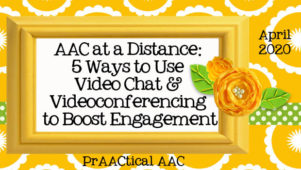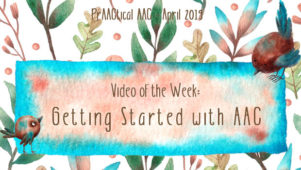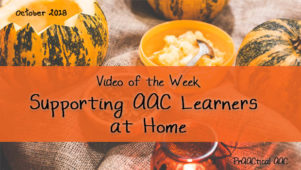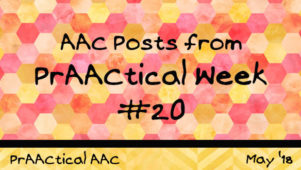The Power of AAC for Distance Communication
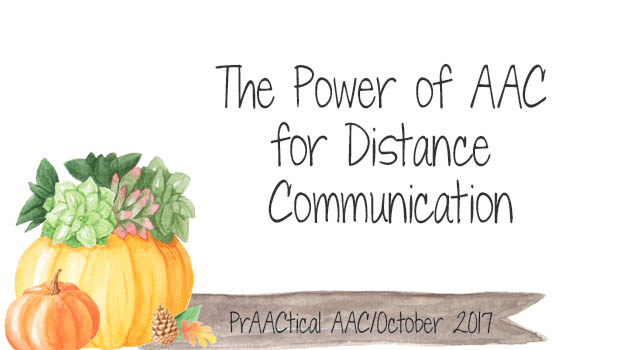
Today, we look to South Africa to learn from AT specialist Desirae Pillay who shares her thoughts on using AAC for communicating at a 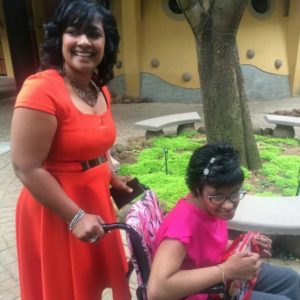 distance. In an earlier post, Desirae shared her experience as an AAC parent. In the current post, she talks about things we don’t always think about when supporting people with AAC needs.
distance. In an earlier post, Desirae shared her experience as an AAC parent. In the current post, she talks about things we don’t always think about when supporting people with AAC needs.
The Power of AAC for Distance Communication
I am an Assistive Technology Advisor for a company in South Africa and a parent to a young adult, Savannah Pillay who is cerebral palsied and autistic. As an advisor, it is my job to know of all the communication options that are available which includes knowing about unaided AAC options. I am a big fan of gesture dictionaries as I have seen how impactful it can be especially when using a multi-modal communication system. I am also a fan of AAC software that not only has a robust vocabulary for communication, language and literacy development; but also includes options to use social media and distance communication.
This year as we celebrate AAC Awareness month, I am reminded of the power of communication in all its forms particularly in the form of distance communication. Many people today have cell phones and use email, SMS, WhatsApp and similar texting platforms to communicate. For our community who use AAC methods, being able to send messages without being in the same space as their communication partner can be so motivating and empowering.
When my daughter began her journey to communication I had no idea that she would ever understand the concept of email or WhatsApp or Facebook. I just wanted her to be able to communicate her basic needs to me. Yet, here I am today; working in job that entails some travel and my daughter is able to contact me by email (her preferred choice of distance communication) when I am miles and miles away from her. While she enjoys viewing Facebook posts of other people, she has not posted anything herself as yet. I am still thrilled that she can independently access Facebook and keep up with what her social circle are up to.
Savannah uses the Beeline page set in Grid 2. She loves sending emails to her friends and family as well as receiving emails. Her email setting is set to read with highlighting which enables her to listen and to follow the text being read on the screen. I initially thought that she would have a hard time understanding how to accept communication in this form from a person she could not see; but to my surprise she enjoys this type of communication the most. An email gives her time to process the information she receives and to formulate her response.
Her thoughts and ideas are more clearly formulated and her sentence structure is better when she is not under pressure to communicate face to face. An interesting observation is that over time her spoken communication has improved. She uses more words and uses more core vocabulary.
Below is an example of a birthday invitation that Savannah emailed to her guests. The guests responded to her email which her program “read” out aloud for her.
In my work as an AT Advisor, I always encourage parents and educators to use distance communication as a motivator as one way to encourage communication. It is also a great way to learn the vocabulary and how to navigate in a page set without the pressure of dealing with a communication partner in the same room. Even if at the beginning, all that is being communicated is a greeting; it is a gateway for the communication partner to ask questions or give information that gives the AAC user an opportunity to respond to.
The communication assistant can use aided language stimulation to help the AAC user explore options of how they might respond:
For example:
Email received from Eric: Hi. How are you?
Communication partner can use Aided Language Stimulation and show the AAC user what they can respond with:
Communication Partner: “You can say ‘Hello. I am fine. How are you?’”
Or
Communication Partner: “That was nice of Eric to email you. You can say ‘Hi Eric. It is nice to hear from you. I am doing okay.’”
For families, often we have to trust the caregivers to relay information to us when we leave our children or loved ones. I hope this AAC month we also remember that children become adults who have the right to privacy which includes privacy in their communication. For adults with acquired disabilities they can benefit from distance communication with their loved ones during lengthy hospital stays or when they are unable to leave their home due to disability.
When selecting a high tech AAC system, please consider using a system that gives the AAC user access to distance communication and social media. They can still keep up with the news of their families and friends even if they cannot actively participate in the lives of their social circle anymore. That is important for rehabilitation and overall wellbeing. For new communicators, I ask if their peers have access to social media and distance communication. If they do, then the AAC user must have access to the same platforms in the language they speak: AAC.
Happy AAC month.
Filed under: Featured Posts, PrAACtical Thinking
Tagged With: AAC family, distance communication
This post was written by Carole Zangari

